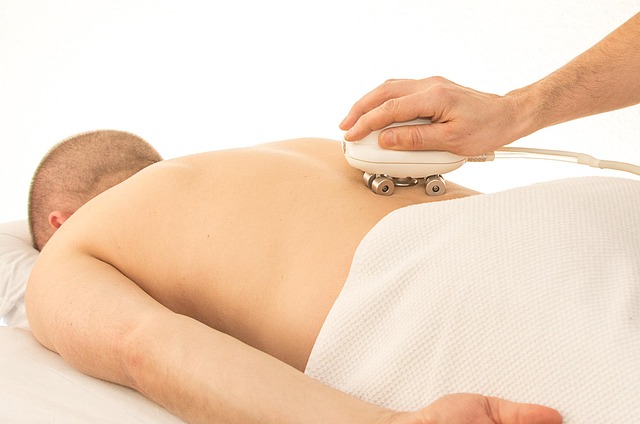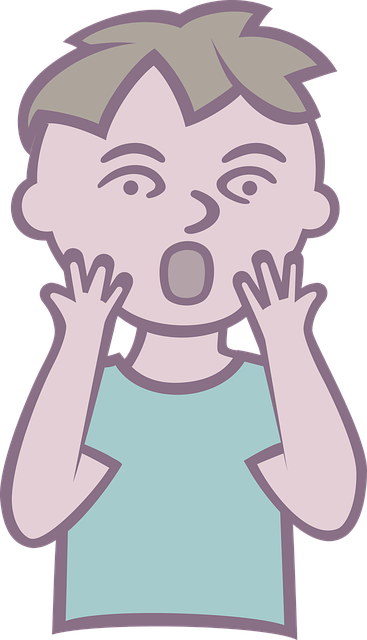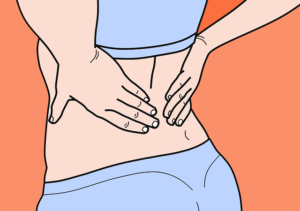Acupuncture, an ancient Chinese medicine technique using thin needles at specific body points (acupoints), is gaining modern recognition as a powerful tool for managing chronic back, neck, and joint pain without opioids. By restoring balance in the body's energy flow (Qi) and stimulating natural healing processes, acupuncture offers effective relief from conditions like sciatica, migraines, and other persistent pain, improving quality of life naturally. To ensure optimal results, it's crucial to find a qualified acupuncturist with proper certifications and experience, who can tailor treatments based on individual needs during initial consultations.
Looking for drug-free pain relief? Acupuncture offers a natural, effective solution for back pain, neck pain, and more. This ancient practice has gained modern popularity due to its ability to target specific pain areas and provide lasting relief. In this guide, we’ll explore the science behind acupuncture, its benefits for chronic pain management, and how to find a qualified acupuncturist. Discover why acupuncture is revolutionizing pain relief, improving overall well-being, and providing a safe alternative to medication.
- Understanding Acupuncture: An Ancient Practice for Modern Ailments
- The Science Behind Acupuncture and Its Effectiveness in Pain Relief
- Targeting Specific Pain Areas: Back, Neck, and Beyond
- How Acupuncture Works to Alleviate Chronic Pain
- Benefits Beyond Pain Relief: Improving Overall Well-being
- Finding a Qualified Acupuncturist: Tips for Effective Treatment
Understanding Acupuncture: An Ancient Practice for Modern Ailments

Acupuncture, an ancient practice that has been used for thousands of years, is gaining modern recognition as a powerful tool for managing various types of pain, including back and neck pain. This traditional Chinese medicine (TCM) technique involves inserting thin needles into specific points on the body’s surface, known as acupuncture points. These points are believed to be connected to energy pathways or meridians that flow throughout the body, influencing its overall health and well-being.
By targeting these acupuncture points, practitioners aim to restore balance in the body’s natural energy flow, often referred to as Qi (or Chi). This holistic approach to pain relief is especially appealing for individuals seeking non-opioid alternatives for managing chronic joint pain or inflammation. Acupuncture for pain has been shown to be effective in reducing symptoms and improving mobility without the side effects associated with prescription medications. As an alternative therapy, it offers a safe and natural way to address back pain, neck stiffness, and other related discomforts, providing relief and potentially transforming one’s overall quality of life.
The Science Behind Acupuncture and Its Effectiveness in Pain Relief

Acupuncture for pain relief has its roots in ancient Chinese medicine, where it’s been used for centuries to treat various ailments, including back and neck pain. This traditional therapy involves inserting thin needles into specific points on the body, known as acupuncture points, which are believed to stimulate the body’s natural healing response. The science behind acupuncture lies in its ability to interact with the nervous system, releasing endorphins—the body’s natural painkillers—and reducing inflammation.
Studies have shown that acupuncture can be an effective joint pain therapy and inflammation treatment, particularly for conditions like sciatica. By targeting these acupuncture points, practitioners can help alleviate discomfort associated with chronic pain and promote overall well-being. The effectiveness of acupuncture has been backed by numerous research studies, making it a drug-free option worth considering for those seeking alternative remedies for back, neck, or other types of pain.
Targeting Specific Pain Areas: Back, Neck, and Beyond

Acupuncture for pain targeting specific areas like back and neck has gained significant popularity as a drug-free alternative for pain management. This ancient practice involves inserting thin needles into specific points on the body, known as acupuncture points, to promote natural healing and restore balance. When it comes to addressing chronic back pain or stiff necks, acupuncture offers a precise approach by targeting not just the affected areas but also the underlying causes of inflammation and discomfort.
Beyond back and neck, acupuncture’s versatility extends to managing various types of pain, including migraine headaches. Studies have shown that migraine acupuncture can be an effective treatment for reducing frequency and intensity of migraines, providing patients with non-opioid pain relief. By stimulating specific points related to inflammation and sensory processing, acupuncture can help alleviate not just the symptoms but also the root causes of pain conditions, offering a safe and natural solution for those seeking alternative remedies.
How Acupuncture Works to Alleviate Chronic Pain

Acupuncture for pain relief works by stimulating specific points on the body, known as acupoints, using thin needles. These acupoints are believed to be connected by energy pathways, or meridians, that flow through the body. By carefully placing these needles, acupuncture helps to restore balance and unblock energy flow, which can significantly alleviate chronic pain conditions such as back pain, neck pain, and even migraine headaches (migraine acupuncture). This natural approach to pain management is particularly effective for conditions like sciatica, where it can target the affected area directly.
The joint pain therapy associated with acupuncture involves not only needle insertion but also pressure stimulation and manipulation techniques. These methods promote blood circulation and nerve impulse activity, reducing inflammation and muscle tension that contribute to persistent pain. By addressing the root causes of pain rather than just masking symptoms, acupuncture offers a holistic solution for managing various types of chronic pain conditions effectively.
Benefits Beyond Pain Relief: Improving Overall Well-being

Acupuncture for pain goes beyond merely alleviating symptoms; it offers a holistic approach to improving overall well-being. By stimulating specific points on the body, acupuncture promotes the natural healing processes of the body, addressing not just the physical sensation of pain but also its underlying causes. Studies have shown that regular acupuncture sessions can significantly reduce chronic inflammation, a common contributor to various types of pain and many other health issues.
In addition to providing non-opioid pain relief for back pain, neck pain, and migraines, acupuncture has been recognized for its effectiveness in treating a wide range of conditions. The practice stimulates the release of endorphins, often referred to as “feel-good” hormones, which can help manage stress and anxiety levels—factors that are closely linked to chronic pain. By targeting specific points associated with inflammation treatment, acupuncture can offer relief from migraines and other painful conditions, enhancing the overall quality of life for those seeking drug-free alternatives.
Finding a Qualified Acupuncturist: Tips for Effective Treatment

When exploring acupuncture for pain relief, finding a qualified and experienced acupuncturist is paramount to ensuring effective treatment. Start by checking certifications and licenses to verify their training and expertise. Reputable acupuncturists often hold diplomas from accredited institutions specializing in traditional Chinese medicine (TCM). Online reviews and references from previous patients can also provide valuable insights into their skill level and patient care.
During your initial consultation, communicate openly about your symptoms, including back pain, neck pain, or migraine headaches. A qualified acupuncturist will conduct a thorough examination, considering factors like medical history, lifestyle, and the severity and duration of your pain. This personalized approach is key to tailoring treatment plans that address not only the symptoms but also the root causes, such as inflammation or joint pain. Remember, acupuncture for pain management requires a partnership with your practitioner to achieve optimal results.
